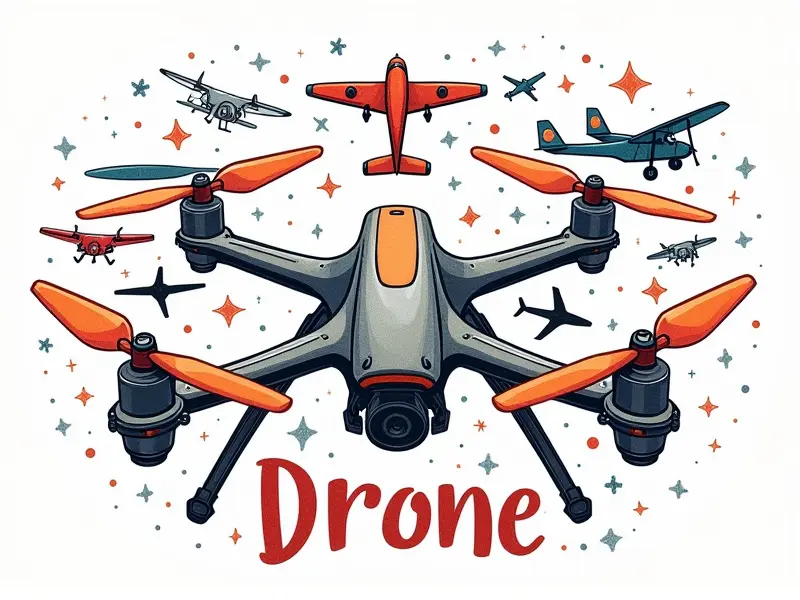Camera controls explained?

Mastering FPV Camera Controls
FPV (First Person View) camera controls are essential for anyone looking to get the most out of their drone or RC aircraft. Whether you're a beginner or an experienced pilot, understanding how to manipulate your FPV camera can significantly enhance your flying experience and performance. This article will guide you through various aspects of controlling your camera effectively.
Essential Tips for Controlling Your Drone Cam
To get the most out of your drone cam, it's crucial to familiarize yourself with a few essential tips:
- Adjust the Camera Angle: Learn how to tilt and pan your camera for optimal viewing angles.
- Use High-Definition Settings: Ensure that your camera is set to high-definition mode for clear, sharp images.
- Tune Your Video Transmission: Optimize the video feed by adjusting settings like bitrate and resolution.
Optimizing FPV Racing Drone Cameras
For those involved in FPV racing, camera optimization is key to success. Here are some tips to fine-tune your FPV racing drone:
- Choose the Right Camera: Select a camera with high frame rates and low latency for smooth, responsive video.
- Mounting Stability: Ensure that your camera is securely mounted to prevent vibrations and shake during flight.
- Battery Management: Use efficient battery systems to maintain optimal power levels throughout the race.
Basic Commands for RC Plane Cameras
Controlling an FPV camera on an RC plane involves several basic commands. Here’s a breakdown of what you need to know:
- Tilt Up/Down: Adjust the camera's vertical angle.
- Pan Left/Right: Rotate the camera horizontally for panoramic views.
- Zoom In/Out: Magnify or reduce the field of view to focus on specific areas.
Understanding RC Helicopter Camera Control
RC helicopters offer unique challenges when it comes to camera control. Here are some key points to consider:
- Gimbal Stability: Use a gimbal system to stabilize the camera during maneuvers.
- Camera Orientation: Adjust the camera angle relative to the helicopter's orientation for better visibility.
- Transmission Quality: Ensure that your video transmission is clear and lag-free.
How to Adjust Your Quadcopter Camera
A quadcopter’s camera can be adjusted in several ways to enhance performance:
- Tilt Adjustment: Tilt the camera up or down based on your flying needs.
- Pan Control: Rotate the camera left or right for better situational awareness.
- Zoom Settings: Fine-tune zoom levels to capture details from a distance.
Simplified Guide to Drone Camera Functions
This guide provides an easy-to-understand overview of drone camera functions:
- Live Video Feed: View real-time footage transmitted directly from the drone's camera.
- Image Quality Settings: Adjust parameters like resolution and frame rate for optimal image clarity.
- Control Interface: Use a dedicated controller or smartphone app to manage camera settings.
Beginner's Guide to RC Camera Controls
If you're new to FPV flying, this guide will help you get started with basic camera controls:
- Familiarize Yourself with the Interface: Learn how to navigate your control panel.
- Practice Basic Commands: Start by mastering tilt and pan movements.
- Troubleshoot Common Issues: Know how to fix common problems like lag or poor image quality.
Navigate with Ease: RC Camera
Moving smoothly through your environment requires a keen understanding of camera navigation. Here’s what you need to know:
- Real-Time Orientation: Keep track of the drone's position relative to your viewing angle.
- Adjust for Wind Conditions: Compensate for wind by adjusting the camera's tilt and pan settings.
- Use Markers and Landmarks: Identify key points in your environment to navigate more effectively.
Quick Guide to FPV Camera Settings
To maximize performance, it’s important to tweak your camera settings appropriately. Here are some quick tips:
- Frame Rate Optimization: Set the frame rate according to your flying style and environment.
- Battery Management: Monitor battery levels to avoid sudden drops in power.
- Transmission Quality: Ensure that your video feed is clear and responsive by adjusting transmission settings.
Fine-Tuning Your FPV Racing Drone Camera
To fine-tune your racing drone camera, focus on these key areas:
- Camera Resolution: Opt for higher resolutions to capture more details during races.
- Gimbal Precision: Use a high-precision gimbal system to stabilize the camera and reduce shake.
- Battery Efficiency: Utilize efficient battery packs to maintain optimal performance throughout the race.
Conclusion
Mastery of FPV camera controls is essential for anyone in the RC flying community. Whether you're a beginner or an experienced pilot, understanding how to manipulate your camera can significantly enhance your flying experience and performance. By following the tips and guidelines provided in this article, you'll be well-equipped to optimize your drone or RC aircraft's camera settings for optimal results.

